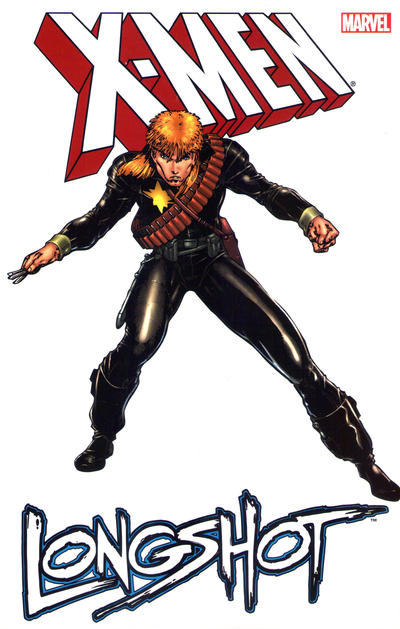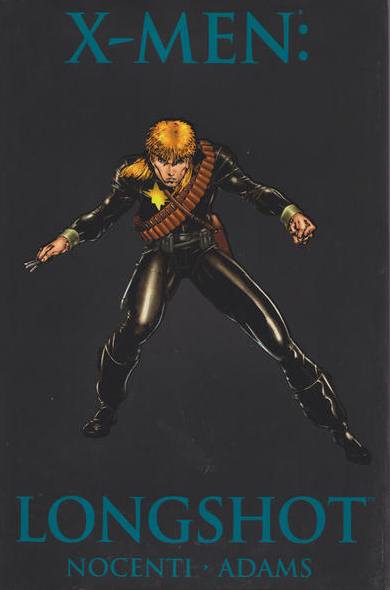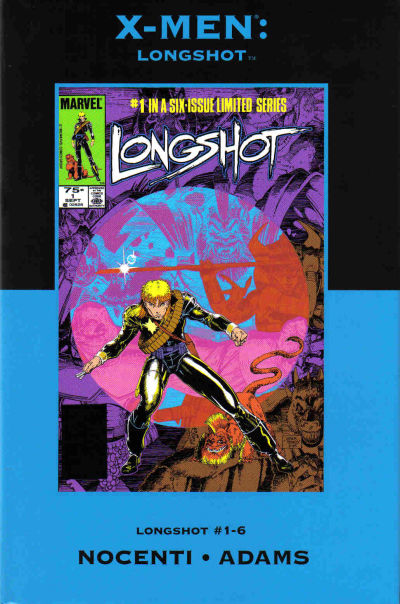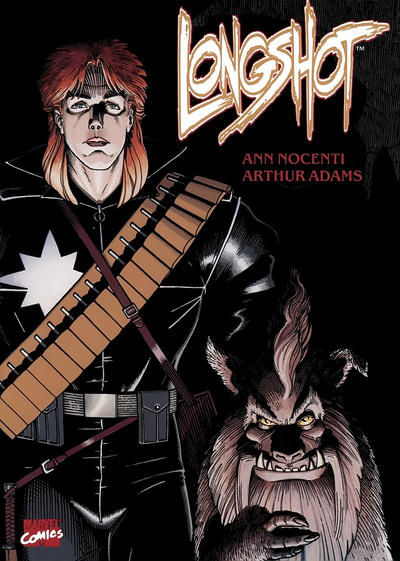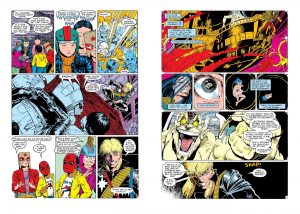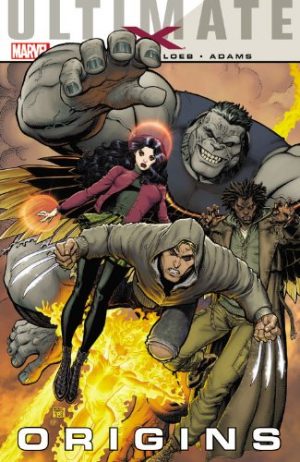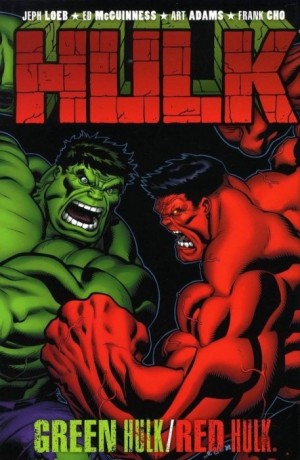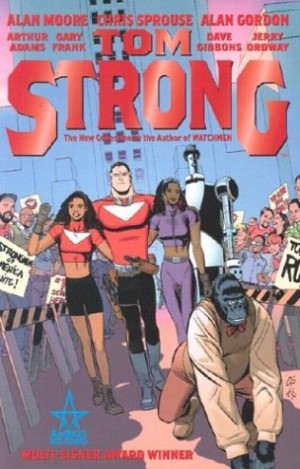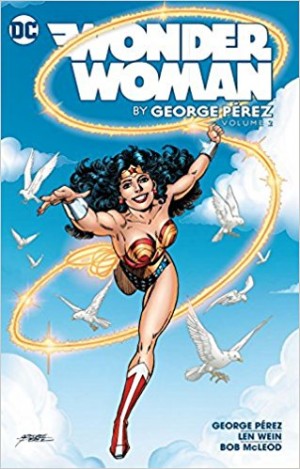Review by Frank Plowright
Longshot was phenomenally well received when serialised in the mid-1980s, but despite Marvel punting assorted paperback and hardcover collections over the years, it’s not aged well.
What survives is the detailed art of then newcomer Art Adams, which proved the major selling point back in the day. The problems a new artist can run into are apparent when it comes to perspective and foreshortening, but there’s considerable imagination and enthusiasm, and the work ethic of someone who ensures crowd scenes look like crowd scenes. He seems to have based Longshot visually on Limahl from short-lived 1980s pop group Kajagoogoo, with the mullet screaming the era.
Longshot isn’t named Longshot until his arrival on Earth, which is via dropping through a dimensional portal to escape unknown pursuers. Writer Ann Nocenti was also new to comics, and that’s even more obvious than the artwork. Her intention is that Longshot is the complete innocent, seeing as strange what 1980s humans accept as everyday, not understanding basics like money, and appalled at the lack of compassion when it comes to crime. It’s a viable concept muddled by Nocenti being unable to tell a story with any clarity. She jumps from place to place, doesn’t bother with explanations of creatures or people that just turn up from nowhere, and peppers the whole with dialogue that no-one would actually say. She also doesn’t seem to be able to make up her mind about the tone, which veers from deliberately light and silly to dark and depressing, with random social commentary thrown in. Looking back at the series for the introduction and supplementary material Nocenti is very clear about what she intended, but the overall effect is running before she can walk.
It’s a pity as she has original ideas, Longshot always being lucky enough to turn a situation to his advantage being one, and it shouldn’t be forgotten that perennial x-title foe Mojo and his wacky world were Nocenti’s creations.
From being promising and a willing worker in the first chapter, by the end Adams has worked most of the kinks out of his art and blossomed into something phenomenal. He’d improve further very quickly over subsequent Marvel projects.
It’s been pointed out by others online that it’s possible to draw a direct line between Longshot and the style that would dominate at Marvel in the early 1990s. The overly fussy excess of lines would be a major influence on a number of artists, including Whilce Portacio, who inks the story, but of the artists influenced by Adams only Jim Lee matched his sheer talent, and the result was surface similarity, but not the depth.
Longshot would join the X-Men, which is reflected by their name appearing before his on later printings, and the entire story can also be found as part of Marvel Masterworks: Uncanny X-Men Volume 13.
